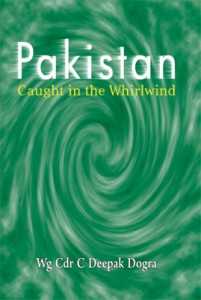IDR Blog
What are the Prospects for a Pakistan-US Nuclear Deal?
The South Asian region has become the focus of global politics, with the proliferation of unaccountable non-state actors, corruption of civilian institutions and the prevailing atmosphere of mutual suspicion between India and Pakistan.
The possession of nuclear weapons by non-NPT states like India and Pakistan has been cause for further concern due to apprehensions of nuclear accidents, potential for misuse of nuclear material and an inexhaustible arms race. Unlike the US-India civilian nuclear deal, no concrete civilian nuclear agreement has been reached between the US and Pakistan.
However, recent diplomatic visits between the US and Pakistan administrations and commitments towards increasing nuclear cooperation have given rise to speculation regarding a potential agreement. The report formulated by Toby Dalton and Michael Krepon of Carnegie Endowment for International Peace and the Stimson Center respectively, is the latest in a series of suggestions that could be followed in chalking out a nuclear trajectory between the US and Pakistan. Considering the influence and stature of the authors in the US strategic community, the report constitutes an insight into the line of thinking followed by policy-makers.
Following the line of action suggested by Mark Fitzpatrick, in his book Overcoming Pakistan’s Nuclear Dangers (2014), the Carnegie-Stimson report seeks to ‘normalise’ Pakistan into the nuclear mainstream. However, it recognises that “a commercial pathway to being mainstreamed into the global nuclear order is highly unlikely for Pakistan, which lacks the commercial leverage that resulted in a nuclear deal for India,” and goes on to suggest compromises that it needs to make in order to be ‘mainstreamed’. The question thus remains, whether the recommendations are feasible and contribute to alleviating the precarious security dilemma in the region.
Recommendations of the Carnegie-Stimson Report
The key motive of the report remains to ‘mainstream’ Pakistan into a global nuclear regime, which otherwise remains glaring and inconspicuous with its absence. It remains an affront to the credibility of the global order if it cannot reign in Pakistan, a defeat it has already suffered with its inability to bring India within its fold.
The premise of the recommendations offered by the report is its projection that in the next five to ten years Pakistan could have a nuclear arsenal not only twice the size of India’s but also larger than those of the UK, China, and France, giving it the third-largest arsenal behind the US and Russia. Since no accurate account of Pakistan’s nuclear arsenal is available, this projection that lends urgency to the report, has been labeled as a ‘sensational speculation’ by the Center for International and Strategic Studies, Islamabad, and hailed similarly by the Strategic Vision Institute, Islamabad.
The report recommends five changes to the direction of Pakistan’s nuclear policy: A shift from “full spectrum” to “strategic” deterrence (i.e. possessing capabilities to deter only the worst cases. Strategic deterrence is an alternative future envisioned by the report, which requires a limitation of Pakistan’s nuclear policy, thus allowing redirection of spending to civilian and military concerns); commitment to a “recessed deterrence posture” and limitation of production of short-range delivery vehicles and tactical nuclear weapons; lifting of Pakistan’s veto on Fissile Material Cut-off Treaty (FMCT) negotiations and reduction of fissile material production; separation of civilian and military nuclear facilities; signing of the Comprehensive Test Ban Treaty without waiting for India.
Feasibility and Implications of the Report
The recommendations of the report leave the impression that Pakistan is indebted to the international community and that it is ready to make heavy-handed compromises.
The proposition to lift the veto on FMCT negotiations is considered unfair in the light of the fact that India has not been asked to stop the production of fissile material.
The NSG waiver granted to India due to its nuclear deal with the US has in fact allowed it to obtain uranium from the international market. This proposition is considered ‘purposefully discriminatory’ especially when India has been offered advanced nuclear technologies and systems that could equally undermine the stability of the region.
The unilateral concessions that the report demands reflects a lack of understanding of the geo-strategic scenario that affects Pakistan’s deterrence posture. Its need for a nuclear agreement is premised not only on socio-economic and technological needs but also political needs.
Pakistan is wary of India’s potential entry into the NSG and its subsequent ability to veto Pakistan’s prospects of an entry into the elite group but it will not oblige to a deal that makes it psychologically weaker to India in its own perception.
Given the South Asian context, it remains necessary to reign in unaccountable actors but the very word ‘mainstreaming’ highlights an assimilationist strategy towards Pakistan’s entry into the global nuclear order.
The key intention of the Carnegie-Stimson report is to strengthen the global nuclear regimes such as the NPT by affecting a compromise on the part of Pakistan. As long as policy proposals continue to ignore the context of indigenous actors, it will continue to be discriminatory and ineffective. Pakistan’s need for nuclear sufficiency and sustainability makes cooperation beyond China, necessary. Whether the Carnegie-Stimson report provides the matrix to achieve this however, remains disputed.
Courtesy: http://www.ipcs.org/article/pakistan/what-are-the-prospects-for-a-pakistan-us-nuclear-deal-4953.html
Post your Comment
One thought on “What are the Prospects for a Pakistan-US Nuclear Deal?”
 Loading Comments
Loading Comments





If your man loves the great outdoors, help him stay warm and dry during his hikes with the North Face Atlas Triclimate Jacket from Shoebuy.com! The fleece interior jacket is removable so he can use it in multiple seasons, and it has a waterproof breathable outer shell.